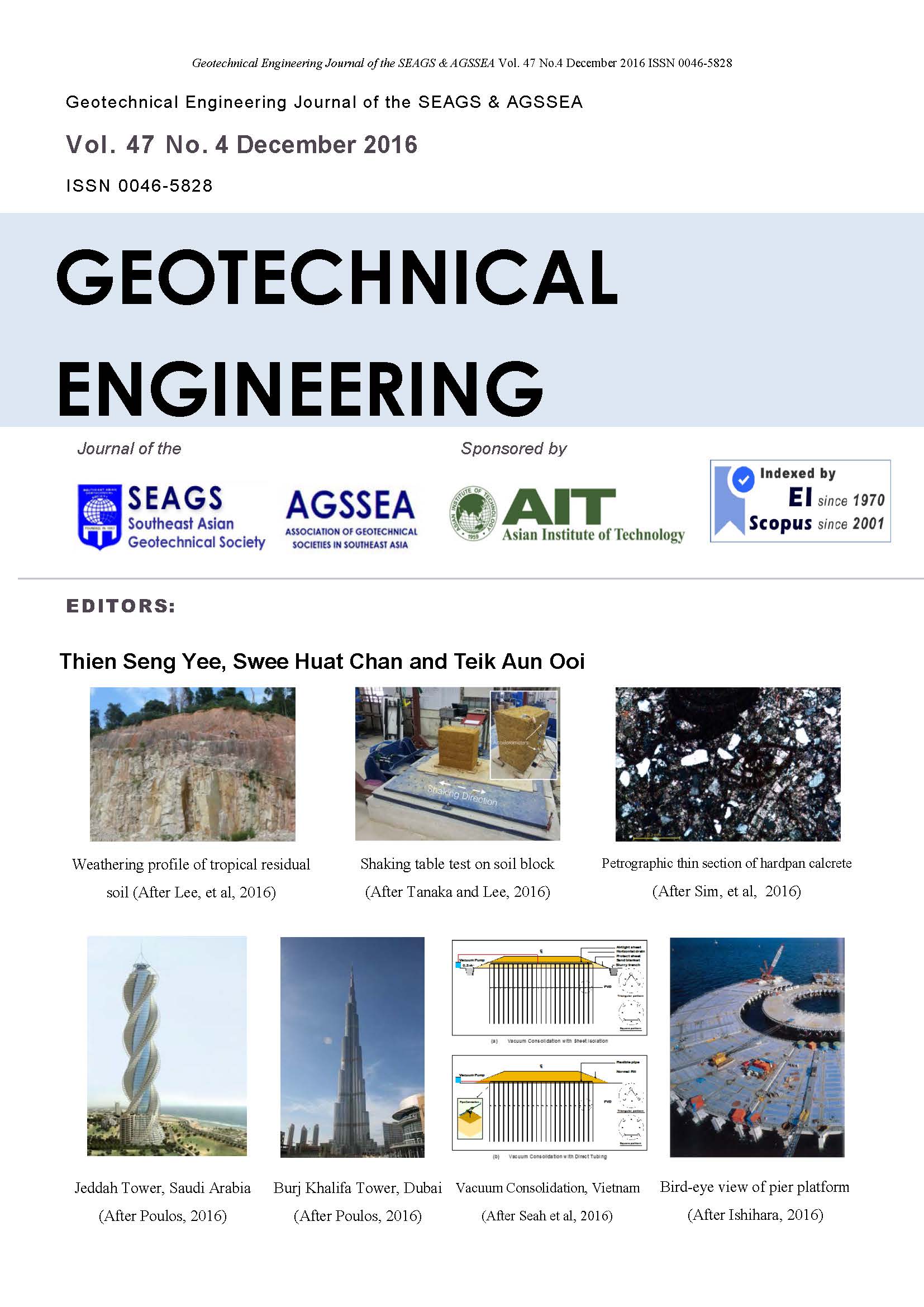Recent Advances in Pile Testing and Diaphragm Wall Constructions in Japan
Main Article Content
Abstract
The first part of this paper consists of brief introduction of the in-situ pile loading tests that have been conducted in Japan over the last two decades in connection with the design and construction of high-rise buildings in areas of soft soil deposits.In addition to the conventional types of tests in which the load is applied at the top and at the toe of the pile (O-cell test), what may be called “pile toe bearing test” and “skin friction test” is introduced. The results of these tests are described and compared with those from the conventional type of the pile loading tests. In-situ prototype tests are also introduced in which bearing power of Barrette type pile is compared with that of the circular type pile. A special case of in-situ pile loading tests conducted in Singapore is also introduced in which the friction between the circular ring-shaped concrete segment and the surrounding soil deposit was measured directly during excavation of the shaft by applying loads up and down by jacks installed between two adjacent segments in vertical direction. The second part of this paper is a brief description on constructions of large-diameter circular diaphragm walls that was carried out about 10 years ago for the LNG storage tank in the coastal site in Tokyo Bay. The construction of the large-scale Kawasaki Island in the middle of Tokyo Bay in Japan will also be introduced. The whole scheme and process of construction is for these two undertakings is introduced with some comments on observed behaviour of the walls and on special precaution taken during construction.
Article Details

This work is licensed under a Creative Commons Attribution-NonCommercial-NoDerivatives 4.0 International License.
Copyright © 2019 Association of Geotechnical Societies in Southeast Asia (AGSSEA) - Southeast Asian Geotechnical Society (SEAGS).


